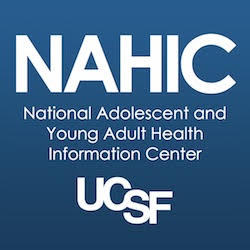Strategy 4: Create YA Targeted Programs
Ready to Launch
Through the adoption of a YA state measure, collaboration with stakeholders and training of personnel, Title V agencies can kickstart young adult health programming (defined as organizational services and activities intended to improve YA health). This section provides further guidance on how to launch effective programming by: 1) incorporating incentives and a sense of community into programs, 2) choosing the right time, place and occasion, and 3) soliciting and proactively responding to feedback.
✔ Incorporate Incentives & Foster an Inclusive Community
Providing incentives and building inclusive communities helps draw people of any age. Focusing on the young adult population, organizations such as the Young Invincibles have developed internship programs that train young adults to educate their peers about pressing YA health issues. Such internships offer professional development, cultivating future leaders in AYA health. Tangible professional incentives include offering academic credit and/or certifications. As a simpler incentive, free food can be a surprisingly effective draw for young adults. Additionally, young adult peer educators are part of the community they’re teaching, enabling them to convey information in a relatable manner and form a sense of camaraderie with other YAs.
With 20% of 18-34 year olds identifying as LGBTQI and 44% representing minorities, millennials are the most diverse adult generation in U.S. history.12,13 Title V professionals can help foster inclusion by using language that is gender and racially inclusive. Concrete steps such as including space for individuals’ preferred pronouns in program intake forms can help the people Title V serves – many of whom are young adults – feel more comfortable using public health services.
| Developing Young Advocates for Mental Health |
| The Young Invincibles implemented a program in Colorado called the Young Advocates, which aims to destigmatize mental health and increase access to mental health services on college campuses. This program facilitates internships for students to lead mental health advocacy and education activities at their schools. Learn more |
✔ Choose the Right Time, Place & Occasion
YAs today differ from previous generations in a number of ways: for example, they’re less likely to own a car and more likely to be in higher education, as well as be tech savvy. These trends have implications for the Time, Place and Occasion (TPO) that are best to reach this population.

Time: College students – many of whom are young adults – are accustomed to attending extracurricular events or meetings on weekday evenings. These times thus represent good opportunities for Title V to host YA-targeted programming. In order to identify specific times when potential attendees are free, Title V may disseminate online interest forms and use free scheduling tools such as When2Meet, Doodle and Calendly. Title V staff can also target programs for times of the school year when risk for issues such as driving under the influence, sexual assault or depression/anxiety are greater. These times include the first six weeks of the fall term, home football game weekends, Halloween and finals weeks.
Place: It’s no surprise that Title V can reach many YAs through colleges. To increase the accessibility of Title V programming, states may consider partnering with university student health services to provide services on campus. Additionally, academic advisors are great collaborators who can help convey public health information to their students. Workplaces that hire many young adults – such as grocery stores, retailers and restaurants – are other good locations to hold programs.
Occasion: While identifying the best occasion for programming can be tricky, states are encouraged to link their programs to other events that attract young adults, when appropriate, in order to increase visibility. For example, by setting up a table at weekly farmer’s markets or local festivals, Title V can capitalize on larger crowds. If working with colleges, Title V staff are encouraged to consult with their youth advisory board to minimize conflicts with exam season and school breaks.
TPO applies online as well. For example, 94% of 18-24 year olds say they use YouTube,14 yet most public health organizations do not have a strong presence on this platform. See guidance for digital and other outreach in Strategy 5.
↑ (back to top)
| Developing Young Advocates for Mental Health |
| The Young Invincibles implemented a program in Colorado called the Young Advocates, which aims to destigmatize mental health and increase access to mental health services on college campuses. This program facilitates internships for students to lead mental health advocacy and education activities at their schools. Learn more |
✔ Proactively Seek & Respond to Feedback
States can continuously improve young adult health programming by proactively seeking and responding to feedback from young adult Title V participants. Feedback can be collected online, on paper or through both methods. A combination of Likert scale questions followed by free response text boxes for individuals to elaborate their answers further can provide both numerical and qualitative data to guide changes in programming. Additionally, to enable Title V participants to give honest input, it is recommended that states make entering contact information optional. Free survey software for soliciting feedback include Typeform and Google Forms.

Title V managers should establish regular times to go over feedback from participants. Potentially on a quarterly or semiannual basis, Title V teams can review feedback together and brainstorm ideas for improvement based on findings. Such meetings also provide opportunities to reaffirm what is working well and have Title V staff share their own thoughts on what can be improved.
Making a habit of continuous improvement will help Title V agencies respond effectively to a social, political and fiscal environment that is constantly changing. It will keep Title V in tune with what its young adult audience really needs, and – along with the right incentives and TPO – can contribute to greater utilization of public health services.
→ next: Strategy 5 – Use Innovative Outreach
 University of California San Francisco
University of California San Francisco


